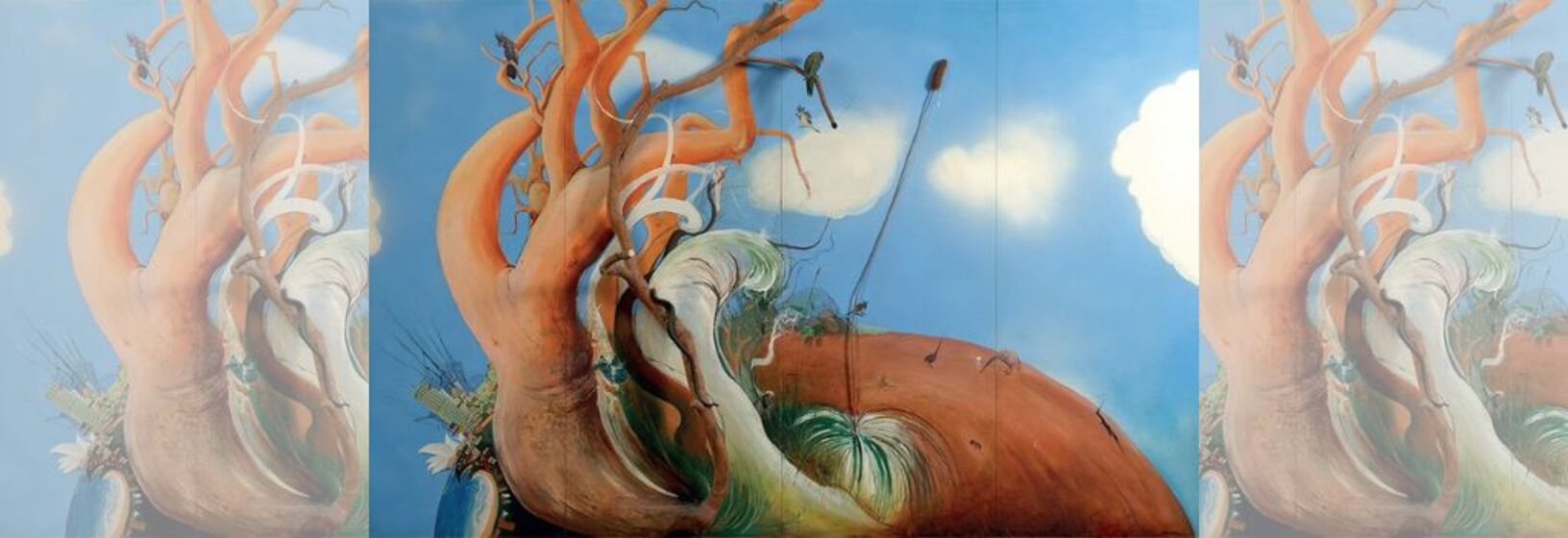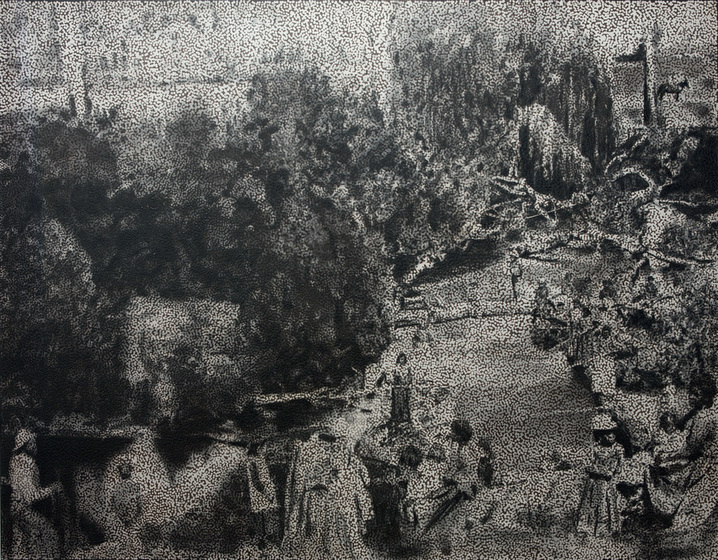Panorama: A question of perspective
TarraWarra Museum of Art is located in the picturesque Yarra Valley in Victoria, Australia.Visitors to the Museum are afforded a spectacular, resonant and panoramic experience of ‘nature’ through the north facing windows. The view stretches towards the distant Toolangi rainforest across planted vines, native bushland and farmland.
The region is surrounded by a spectacular mountain range that includes Mt Baw Baw, Mt Donna Buang, Mt Juliet, Mt Riddell and Mt Toolebewong. As these names attest, we are situated in an area of significant Indigenous history and colonisation. Tarrawarra is a Wurundjeri word that translates approximately as ‘slow moving water’ and is the name given to the area in which the Museum is located.
The Yarra Valley sunsets, soundscapes, seasonal changes, Indigenous histories, ecological vulnerabilities and environmental challenges are in a complex and ever changing entanglement. Since 2012, the Museum has explored this context through special exhibitions and commissions, forums and performances, screenings and lectures. As such, the Museum has sought to understand the complexity of our site, and with that, the broader intersections between art and landscape. Artists provide us the opportunity to ‘see’ the landscape in a different way. They imagine it, call it into being, reflect upon it, animate it, unravel its hidden histories, and expose its ecological sensitivities.
Panorama, the exhibition, was an integral part of this ongoing conversation and imaginative exploration. Our intention was not so much to write a narrative history of Australian landscape painting. Rather, it was to be attuned to the intermingling of voices, points of view, perspectives - colonial and modern, contemporary and Indigenous – that comprise the uniquely Australian persistence to unravel the ‘patter’ of nature.
As a phenomenon to which we are all very accustomed, it is easy to overlook the simple fact that for a landscape to come into being it requires a ‘point of view’, a subjective consciousness to frame a particular expanse of the natural world. As the art historian Simon Schama remarks in his landmark survey on the genre, Landscape and Memory, ‘it is our shaping perception that makes the difference between raw matter and landscape’. [i] The centrality of the viewer’s position in constructing a vista is clearly evident in terms such as ‘perspective’, ‘prospect’, and ‘view point’ which are synonymous with ‘position’, ‘expectation’, and ‘stance’. This highlights that there is always an ineluctable ideological dimension to the landscape, one that is intimately entwined with a wide range of social, economic, cultural and spiritual outlooks. Turning to the notion of the panorama, a brief survey of its conception and infiltration into everyday speech, reveals how our way of seeing the landscape is often tantamount to the formation and delineation of our personal, communal, and national identities.
The term panorama was first coined to describe the eponymous device invented by the British painter Robert Barker which became a popular diversion for scores of Londoners in the late 18th century. Consisting of a purpose built rotunda-like structure on whose cylindrical surface landscape paintings or historical scenes were displayed, ‘The Panorama’ contained a central platform upon which viewers observed the illusionistic spectacle of a sweeping 360 degree vista. With its ambitious, encyclopaedic impulse to capture and concentrate an entire panoply of elements into a singular view, it is telling that this construction would soon give rise to an adjective to describe, not only an expansive view extending in all directions, but also a complete and comprehensive survey of a subject. As the curators Jean-Roch Bouiller and Laurence Madeline argue, these different meanings convey ‘the very essence of the panoramic phenomenon: the central role of perspective, a certain appropriation of the world that follows, the feeling of dominating a situation simply due to having a wide and complete view’.[ii] Indeed, as art historian Michael Newman reveals, the whole notion of the panorama originated in military conceptions of the landscape as a battlefield, whereby strategic vantage points are key to tactical planning.[iii] Underlying its transformation into a form of popular entertainment, the panorama is rooted in a particular form of political authority based on surveying, mapping and commanding the subject of the view.
In this exhibition, the term panorama was invoked to acknowledge that ways of perceiving the landscape have their own histories which have arisen out of particular social, political and cultural contexts. As the landscape architect Anne Whiston Spirn contends: ‘In every landscape are ongoing dialogues; there is “no blank slate”; the task is to join the conversation’.[iv]However, far from claiming to present an unbroken view or a complete survey, Panorama challenged the very notion of a single, comprehensive monologue by presenting a series of works which engaged with the discourse of landscape in a diverse range of voices. Taking advantage of the tremendous depth and strength of the TarraWarra Museum of Art collection gifted by its founders Eva Besen AO and Marc Besen AC, the exhibition was staged in two parts, with a different selection of paintings exhibited in each half. Displayed in distinct groupings which explored alternative themes and concerns, Panorama highlighted the works of key artists who have redefined, expanded and interrogated the idea of the landscape in ways which suggest that it is far from settled.
Further Information
[i] Simon Schama, Landscape and Memory, New York: Vintage Books, 1996, p. 10.
[ii] Jean-Roch Bouiller and Laurence Madeline, Introductory text for the exhibition I Love Panoramas, MuCEM and the Musées d’Art et d’Histoire, Geneva, 4 November 2015 - 29 February 2016, URL: http://www.mucem.org/en/node/4022
[iii] See ‘The Art Seminar’ in Landscape Theory, (eds. Rachael Ziady DeLue and James Elkins), New York and London: Routledge, 2008, p. 130.
[iv] Anne Whiston Spirn, ‘“One with Nature”: Landscape, Language, Empathy and Imagination’ in Landscape Theory, 2008, p. 45.
























